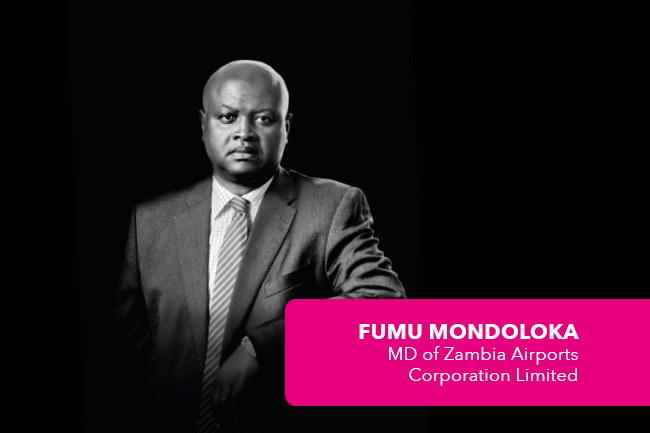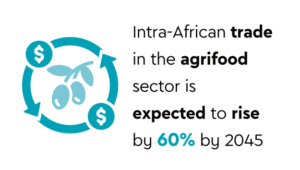Zambia Airports Corporation Limited (ZACL) has invested more than US$1 billion into the nation’s aviation industry over the past seven years, with the intention of turning the country into an aviation and logistics hub for the Southern African sub-continent. In addition to the major infrastructure and revitalisation projects at Zambia’s four international airports, there are new revenue-generating projects.
Fumu Mondoloka, MD of ZACL, says that several pieces of land around the Kenneth Kaunda International Airport (KKIA) in Lusaka are in development. ‘We are constructing a shopping mall, an office park and two hotels – one of which caters specifically for in-transit visitors – under a Land Utilisation Plan, which will present us with numerous business opportunities once completed.
‘This further enhances the infrastructure development project at the airport, which at a cost of US$360 million also includes the construction of a 4 million-capacity [per year] international terminal building with six aerobridges, a VIP pavilion, and makeovers to our taxiways and aprons, landside and airside driveways, and a new air traffic-control tower and cargo terminal.’
ZACL is also developing a greenfield airport in Ndola, investing US$397 million. When completed, it will feature a 1 million-a-year-capacity terminal building with three aerobridges, a hotel, business complex and revisions to its apron, taxiway and runway. The airport, currently being referred to as the Copperbelt International Airport, as it is based in a region known for its copper, will also boast a new rescue and fire services station, landside and airside driveway, an air-traffic control tower, cargo terminal, aircraft maintenance hangar and a fuel farm.
Two additional international airports fall under the mandate of ZACL, the Harry Mwaanga Nkumbula International Airport (HMNIA) in Livingstone (rehabilitated at a cost of cost of US$60 million in 2016), and the Mfuwe International Airport. ZACL is also responsible for three strategic and seven provincial aerodromes and the provision of air navigation services within the Zambian airspace.
‘It is our responsibility to ensure air safety and improve standards of service provision at the airports and in the nation’s airspace,’ says Mondoloka. ‘We recognise that the changing demands of airlines, passengers and the general public can only be met if facilities and services are modernised through refurbishment, rehabilitation, replacement and new construction. In this way, we link Zambia to the rest of the world.’
ZACL has not compromised on the ethnicity of the region as it modernises its facilities. ‘We feel it is important to ensure that elements of our African culture are represented in our designs, both internal and external.’
This will be appreciated by the close to 2 million passengers – around three-quarters of them international travellers – who used ZACL facilities during 2018. ‘When compared to 2017, there has been an overall growth of 10.5%,’ according to Mondoloka. ‘Domestic movement has grown significantly at 22.7%, while international movement grew by 7.9%.’
Across this growth, each of the international ports is identified as serving, but is not limited to, a specific focus: KKIA for predominantly commerce and business; Simon Mwansa Kapwepwe International Airport for mining and industrial activities; HMNIA, near the Victoria Falls, for tourism and conferencing; and Mfuwe, known for its beautiful and prolific natural game environment, also for tourism.
ZACL also engages with a large number of stakeholders to ensure its efforts are aligned to overall national and corporate strategies. These include other airlines; the Zambia Tourism Agency; the Zambia Civil Aviation Authority; tour agencies; hotels; handling companies and clearing agents.
The Zambian government, including agencies and ministries, plays a big role and has stepped in to collaborate with ZACL on all project enhancements, notably the procurement of primary and secondary surveillance radar systems, known as Smart Airports Systems (SAS), which have already been installed at HMNIA.
‘The SAS is an important and integral part of modern airport operations, which enhances efficiency and effectiveness aligned to safety and security of all users of the airports, inclusive of passengers, operators and aircraft,’ says Mondoloka. ‘It helps us make better decisions given the accuracy of information provided.’
The innovative radar project includes advanced ground-to-air control systems, and ground-to-air radio communications, the latter of which assures voice communication with an aircraft at all flight levels and time. The combination of radar and voice, among other benefits, increases capacity in air-navigation service provision, reduces aircraft fuel burn and flight time through vectored direct routing, and presents efficient route changes that have environmental benefits.
Mondoloka says that, with the infrastructure projects now taking shape, it is time to concentrate on passenger growth. ‘We are in the process of commissioning an air service development project that we are confident will underpin our growth in traffic and passengers, and direct the harnessing of our geographical position as a transport hub for Southern Africa.
‘Through our investment into new services, modern infrastructure and strategic partnerships, we have created a domino effect that will directly and indirectly affect the economic growth of Zambia in a positive way.’

















